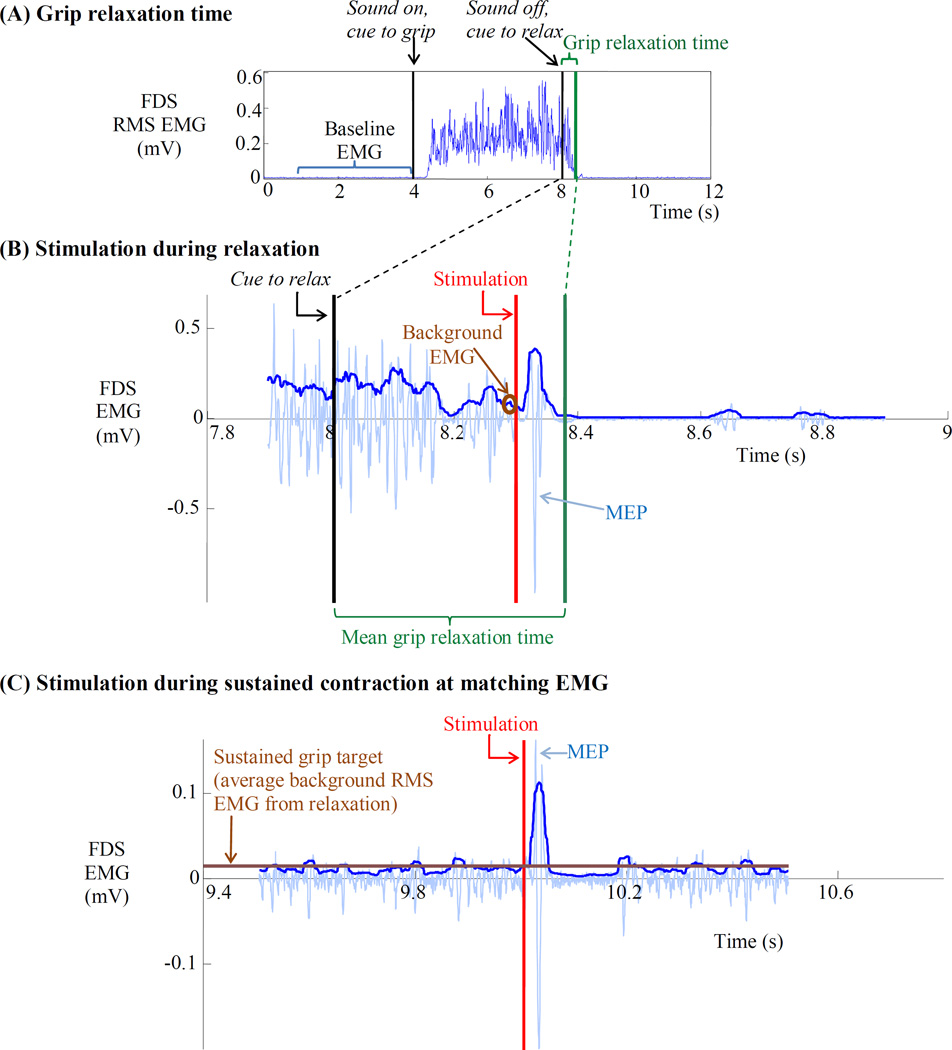Figure 2.
(A) To measure grip relaxation time, the subject maximally and isometrically gripped the handle upon the start of a computer generated sound and relaxed the grip upon the termination of the sound. Grip relaxation time was quantified as the time in which the postcontraction FDS RMS EMG fell below mean + 3SD of the precontraction baseline FDS RMS EMG. (B) To measure SICI during relaxation, stimulation was applied at 70%, 80%, or 90% into the subject’s mean grip relaxation time during the grip-and-relax trial. The peak-to-peak MEP was used toward computation of SICI. The background RMS EMG during 20 ms immediately before stimulation was obtained during the grip-and-relax trial. The average background RMS EMG was used as a target in the subsequent measurement of SICI during sustained grip. (C) To measure SICI during sustained grip, stimulation was applied while the subject maintained a sustained grip at the target muscle activity level using visual feedback. Example trials from a single subject are shown in this figure. In (B) and (C), lighter EMG traces show raw EMG while thicker traces show RMS EMG. The same protocol was used to obtain H reflex during grip relaxation and sustained grip at a matching EMG level.

